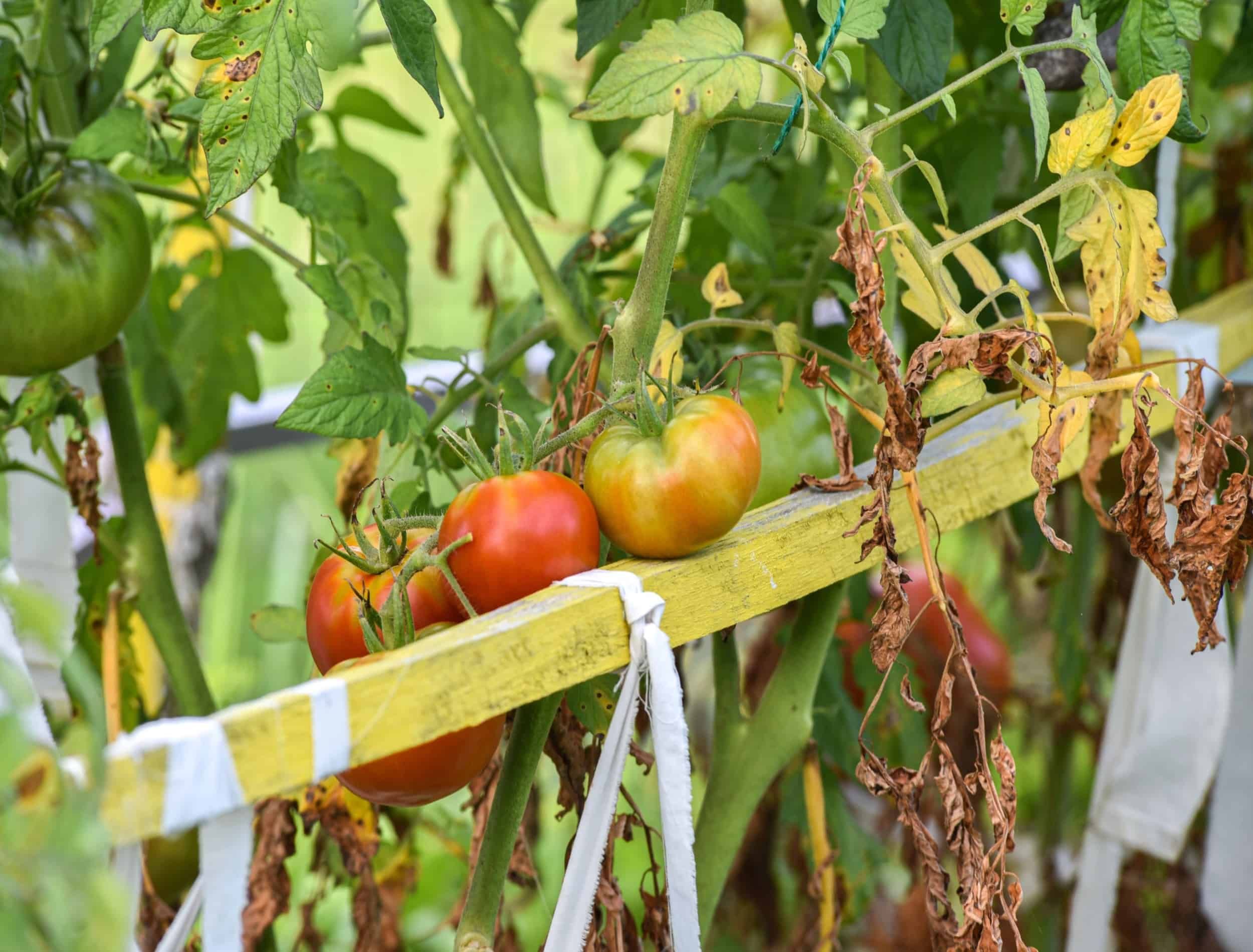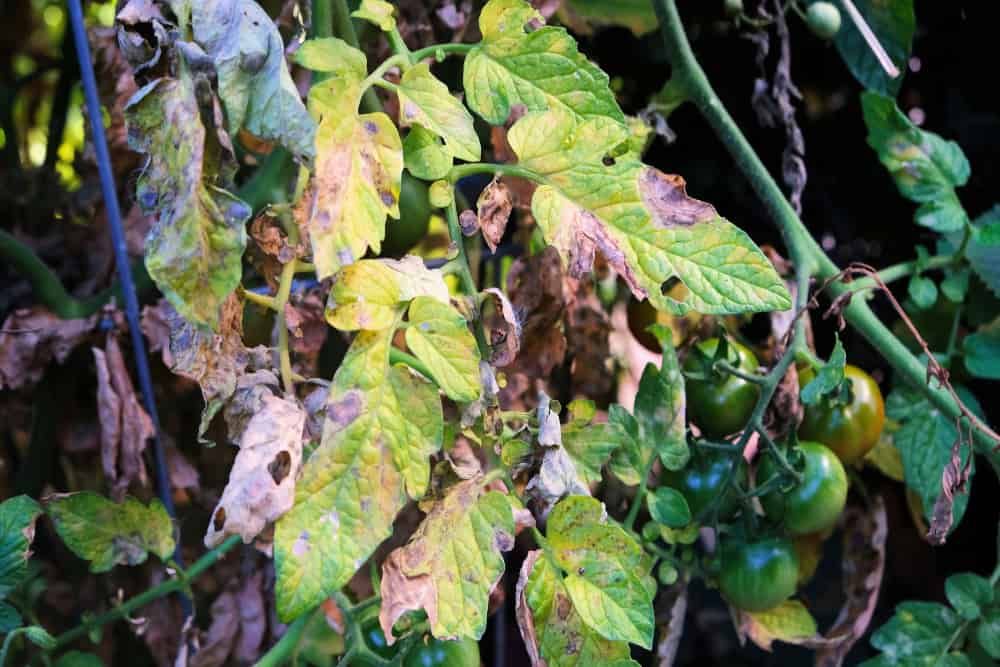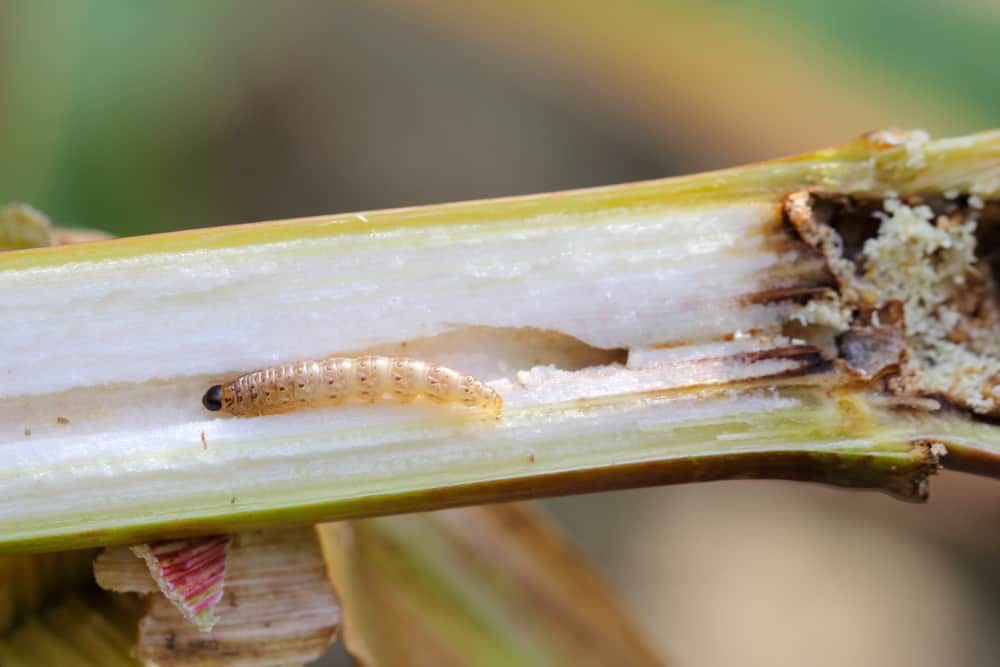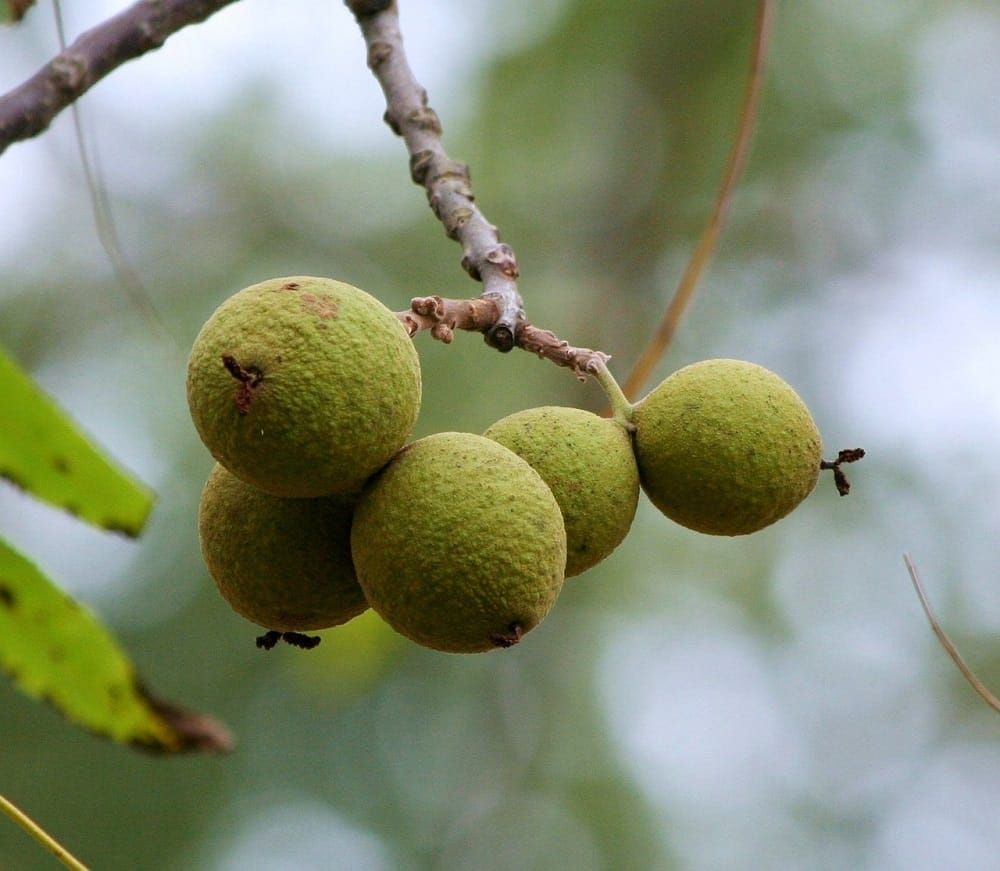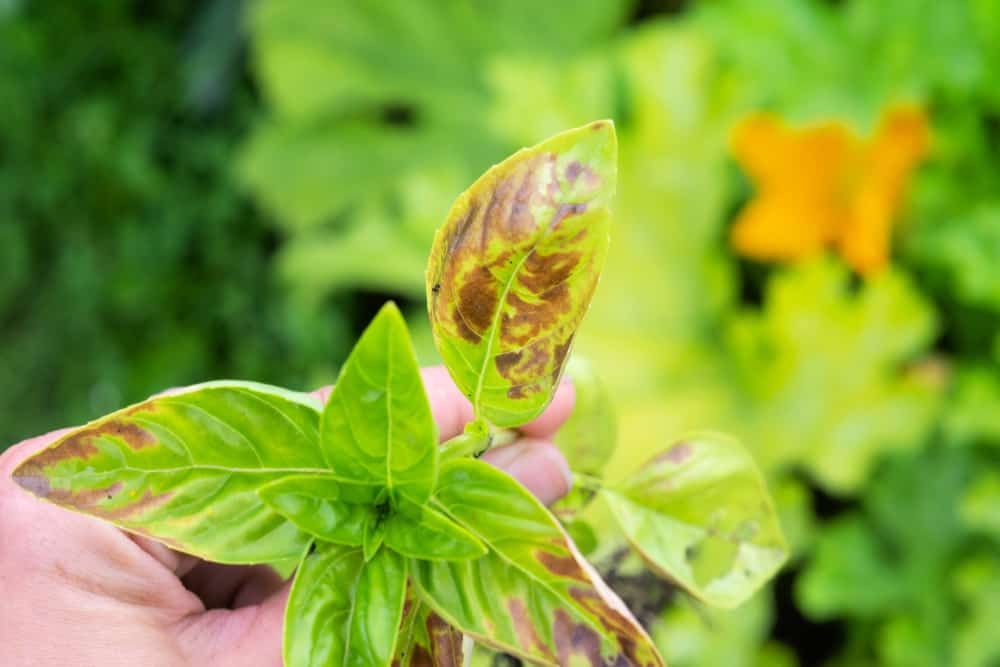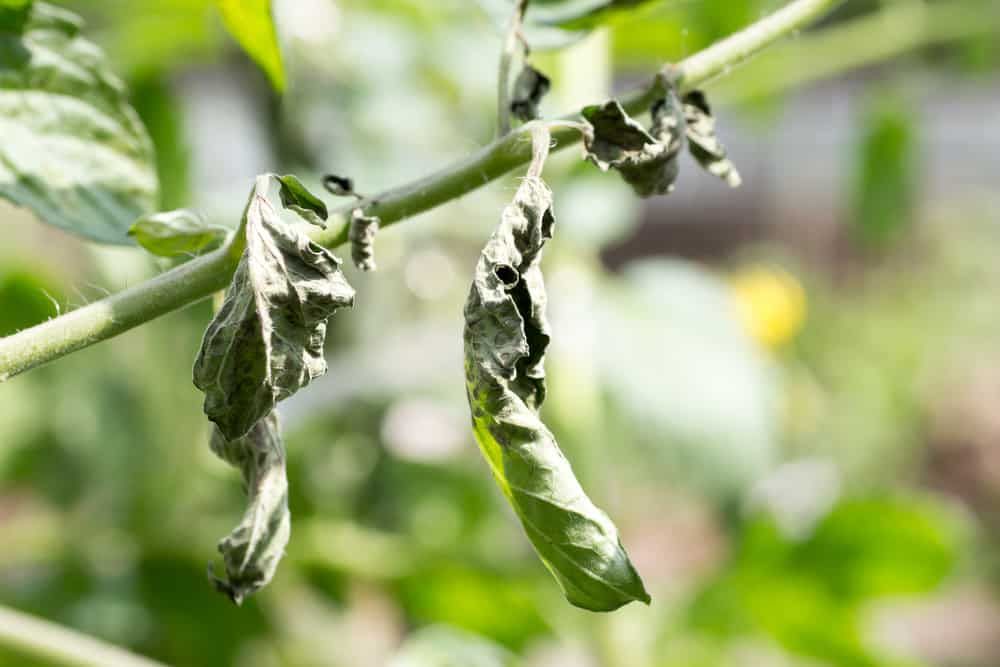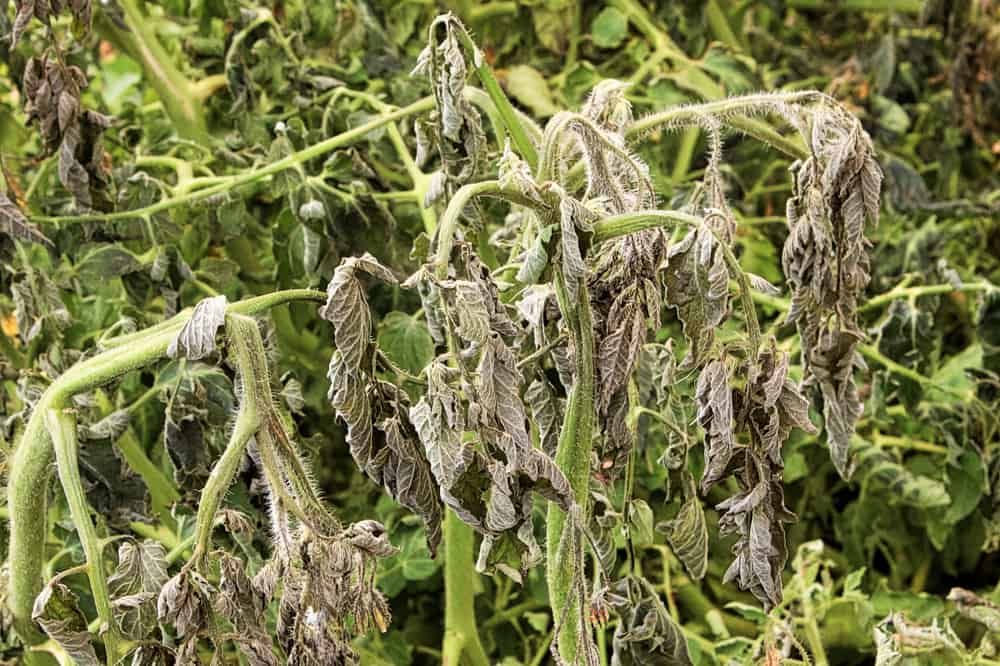Wilting tomato plants can be frustrating, especially when you're not sure why they're doing it. Today, we're going to take a look at some of the most common reasons your tomato plants are wilting, and how to correct the issue. So, if you've been having trouble with wilted tomatoes, stay tuned! This article will help you get them back on their feet in no time.
Lack of Water
Image credits: Ombee Ly via Shutterstock
If your tomato plants are wilting, it may be due to a lack of water. Water is essential for the plant to take up nutrients and transport them throughout the plant. Without enough water, the plant will start to wilt.
There are a few things you can do to check if your plant is getting enough water. First, check the soil around the base of the plant. If it feels dry, give the plant a good watering.
Second, look at the leaves of the plant. If they're drooping or turning yellow, that's another sign that the plant needs more water.
If you think your plant isn't getting enough water, try increasing the amount you're giving it. Water in the morning so the plant has all day to absorb the nutrients. And, make sure to water deeply so the water reaches the roots of the plant. With a little extra water, your tomato plants should start to perk up!
Stalk Borers
Image credits: Tomasz Klejdysz via Shutterstock
If your tomato plants are wilting, it could be due to stalk borers. Stalk borers larvae hatch and bore into the stem, causing the plant to wilt. You may see sawdust-like frass (sawdust-like excrement) coming out of the stem.
If your tomato plants die, remove, and destroy the infested plants. The tall weeds in vegetable gardens are a great spot for these pests to thrive. Cutting or mowing these areas may help control them.
Walnut Toxicity
Image credits: JamesDeMers via Pixabay
Black walnut trees contain a chemical called juglone, which can be toxic to some plants. When the roots or leaves of these plants come into contact with juglone, they can start to wilt, yellow, their growth will be stunted, and eventually, will lead to the death of susceptible plants.
There is nothing that can be done to save juglone-injured tomato plants. Destroy any dead tomato plants so the effects of this chemical will not continue affecting your crop yield or quality.
Additionally, you can try moving your veggies to a different location, away from the walnut tree dripline. You can also try planting other plants that are known to be tolerant of juglone. With a little trial and error, you should be able to find a solution that works for your garden.
Fusarium or Verticillium Wilt
Image credits: Abduramanova Elena via Shutterstock
Unfortunately, there are several diseases that can cause tomato plants to wilt. The most common diseases are called fusarium or verticillium wilt, which are caused by a fungus that attacks the plant's vascular system. Once the fungus enters the plant, it's almost impossible to save it.
The best way to prevent these diseases is to plant disease-resistant varieties of tomatoes such as beefsteak tomatoes. If you think your tomato plants may have fusarium or verticillium wilt, the best thing to do is to remove the affected plants from your garden to prevent the fungus from spreading.
Tomato Spotted Wilt Virus
Image credits: Miyuki Satake via Shutterstock
Another possible culprit is Tomato Spotted Wilt Virus (TSWV). The virus is spread by thrips, tiny winged insects that feed on plant tissue. When a thrip feeds on an infected plant, it picks up the virus and can then spread it to other plants as it moves from place to place.
TSWV can cause a wide range of symptoms, depending on the plant species involved. In tomatoes, TSWV can lead to stunted growth, yellowing leaves, and small, brown, or green rings on the fruit.
There is no cure for TSWV once a plant is infected, so the best way to prevent it is to take steps to control the thrips population. This can be done by removing infected plants and destroying any plant debris where thrips might lay their eggs. Doing so will help to prevent the spread of this virus and keep your tomato plants healthy.
Frost
Image credits: Amelia Martin via Shutterstock
Frost can cause your tomato plants to wilt for a number of reasons. One reason is that frost can damage the leaves of the plant, causing them to turn brown and wilt. Another reason is that frost can damage the roots of the plant, causing the plant to be unable to take up water and nutrients from the soil. This can lead to the plant wilting and dying.
If you think your tomato plants are wilting due to frost, you should take steps to protect them from further damage. You can do this by covering the plants with a tarp or by placing them in a sheltered area such as a garage or shed. You should also make sure to water the plants regularly, as this will help them to recover from the damage caused by the frost.
Prevention is Key
Wilting tomato plants can be frustrating, but with a little detective work, it's usually easy to determine the cause and correct it. Have you been having trouble with wilted tomatoes? If so, hopefully, this article has given you some ideas of what might be wrong and how to fix it. Do you have any tips or tricks that have worked for you? Let us know in the comments below! Thanks for reading, and happy gardening!

